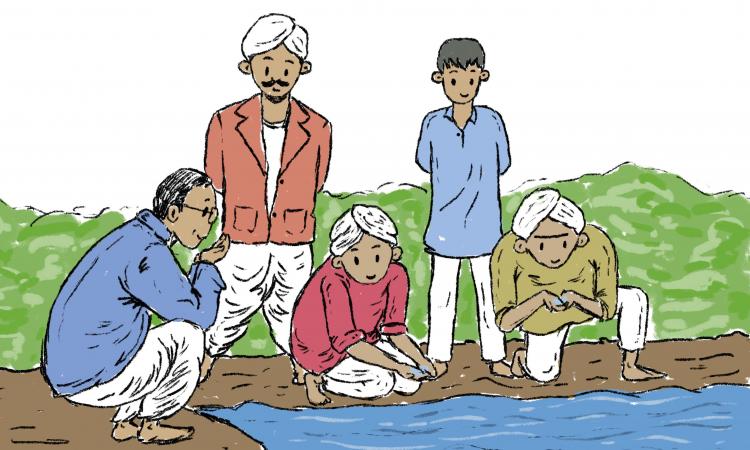
The worst and most inhumane form of discrimination and untouchability is seen when it comes to water. Even today, many villages have a different source of water allotted for Dalits. Many a times, upper caste men and women forbid Dalit women from touching the public source of water fearing the source will be “polluted". Non-dalits fill the water and pour it into the vessels of the Dalits. The amount of water they take back home is dictated by the whims and fancies of the dominant caste.
Article 17 of the Indian Constitution states “untouchability is abolished and its practice in any form is forbidden. The enforcement of any disability arising out of untouchability shall be an offence punishable in accordance with law.” Article15 (2) states that “No citizen shall, on grounds only of religion, race, caste, sex, place of birth or any of them, be subject to any disability, liability, restriction or condition with regard to the use of wells, tanks, bathing ghats etc.”
However, untouchability still exists in our society and manifests itself in myriad forms. A landmark moment in this direction, to defy untouchability and reclaim public spaces for Dalits, was the Mahad Satyagraha led by Dr. Ambedkar. On March 20, 1927, Dr. Ambedkar led thousands of Dalits to the Chavdar lake in Mahad, Maharashtra. He demanded that Dalits be allowed to access water as it is their moral and legal right. He took water from the well and drank it.
The Bole resolution, named after the member who proposed it in the Bombay legislature in 1923 had already called for the opening of public places and public water reservoirs to untouchables. A subsequent resolution of the Mahad municipality declaring that the local tank would be accessible to all — including untouchables — constituted the backdrop for the first Mahad conference in March 1927. However, it only remained on paper.
Mahad Satyagraha was a peaceful protest but it had revolutionary implications. In retaliation, the upper caste Hindus spread the rumour that the “untouchables” were planning to enter the Veereshwar temple. Many of the Dalits were brutally attacked by the upper caste Hindus. The upper caste Hindus also carried out a “purification ritual”, to undo the pollution caused by the mere act of Dalits drinking water from the public tank.
Not much has changed even after the passage of nine decades after Mahad Satyagraha. The concept of purity and pollution still dominates the thinking of people even after untouchability is abolished legally. To mark this watershed event in Dalit history, thousands march to Mahad every year, keeping the memory of this water satyagraha alive.
As water scarcity becomes the everyday reality of people across the world, it also becomes a severe issue for people belonging to the lower caste as it violates basic human rights. It is reported that Dalits were not allowed to touch water from the tankers servicing upper caste villages in Uttar Pradesh's Bundelkhand.
Water woes have been further compounded by the caste discrimination emerging in the times of water scarcity. The caste bias becomes more pronounced when the divide between the rich and the poor gets aggravated. In times of water stress, it is often the case that the upper castes, who belong to privileged sections by virtue of their birth, can afford to buy water in the form of bottles and tankers. It is the poor Dalits and lower castes who get deprived of their basic right in such situations.
Poor quality water and sanitation facilities are major sources of communicable and other water-borne diseases. Dalits further face discrimination and marginalization while accessing health facilities and the vicious spiral deepens. Connection to basic infrastructure and access to essential services are an eminently political issue and they are often used as a tool for social discrimination and exercise of power. The fact that Dalits tend to be ghettoised in the outer reaches of village settlements reinforces such discrimination. This stands true for water too with respect to caste, class and gender and other social axes.
This article has been republished with permission from the Water Practitioners Network. View the original here